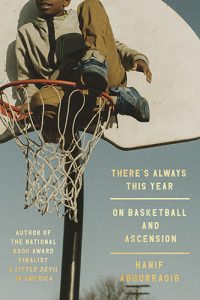The Hollins Critic – December 2010
Volume 47 Number 5
December 2010
Five Times
Sima Rabinowitz
The Hollins Critic is one reason why print publications must never be allowed to perish. You simply cannot duplicate, imitate, or recreate this type of pleasure online. Just 24 pages, a sleek, understated experience of intelligent reading. One full-length essay; a few short reviews; a few well-chosen poems. You can read it one sitting, though you may wish to make it last longer. This little publication always reminds me of the adage “less is more.”
The Hollins Critic is one reason why print publications must never be allowed to perish. You simply cannot duplicate, imitate, or recreate this type of pleasure online. Just 24 pages, a sleek, understated experience of intelligent reading. One full-length essay; a few short reviews; a few well-chosen poems. You can read it one sitting, though you may wish to make it last longer. This little publication always reminds me of the adage “less is more.”
This issue is comprised of a smart, readable, enlightening essay by poet and Spalding University professor Lynnell Edwards on the work of poet Cecilia Woloch; book reviews of poetry, mostly from indie presses I might not know of were it not for The Hollins Critic; and poems by Jennifer Clement, William Miller, Burn Thompson, and Weston Cutter. From the essay on Woloch, to the poem on the back cover/mailing page by Cutter, there isn’t a superfluous word, nothing that isn’t exactly right, right where it is. “What if dust,” begins the poem “From What Tree” by Cutter. Every line in these polished two-dozen pages is equally economical and compelling.
Edwards’s essay, “Dreaming the Long Carpathian Dreams,” focuses on the place (position/role) of place (personal and geographical space) in Woloch’s poetry. The essay is a close reading of texts, yet it is happily free of off-putting and alienating academic jargon. This is not to say that the reading is “popular” in sensibility, only that it is meant to help readers appreciate Woloch’s work, rather than to make it appear accessible only to erudite and privileged insiders (“critics”). She relies on Woloch’s autobiography to elucidate the poetic texts, an approach that may be questionable (in theory) on some levels, but which is compelling and instructive in this case. Ultimately, I found this approach wholly logical and acceptable, given the poems and their genesis. Edwards does an admirable job of balancing quotes from the texts, biographical information about Woloch, and critical analysis. I think the goal of any such essay should be to inspire one to read (or reread) the poet in question, and Edwards certainly does that.
As I write this review, hundreds of thousands of men (yes, only men) are protesting in the streets of Cairo, and so I found William Miller’s poem, “Brady’s Pictures,” the final lines quoted here, timely and relevant:
From the rice paddy
to the burning mosque,
he was the grandfather
of tv news.
Sadly, he might have
stilled all cannon fire,
raised the last flag
for the south.
As people rise up in protest and mosques burn, I am grateful for intelligent thinking, writing, and reading, like the work I have come to depend on in The Hollins Critic to help me gain perspective on everything from poetry to protest.
[www.hollins.edu/grad/eng_writing/critic/critic.htm]




